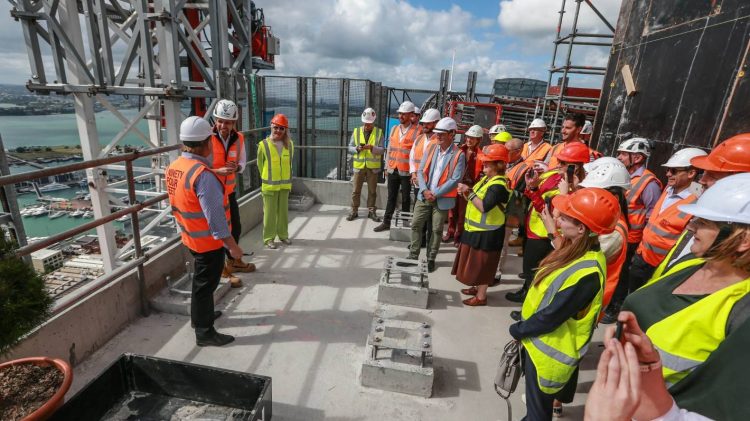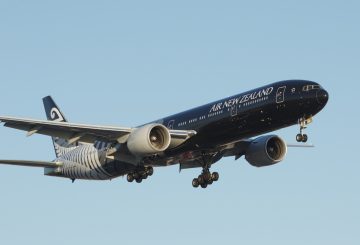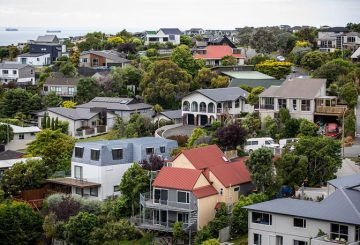在标志着一座耗资2.5亿美元的新摩天大楼最高点竣工的有风仪式上,建议建筑工人戴上安全帽。该活动在大楼的42层举行,随后在地面上举行了传统的庆祝活动。
奥克兰天际线的最新建筑位于艾伯特街51号,将设有一家拥有225间客房的名为Indigo的酒店,以及位于最高13层的30套豪华公寓。苏富比地产的马克·哈里斯表示,尽管这套335平方米的顶层公寓仍然可用,但仍有85%的公寓已售出。
顶层公寓将包括三间卧室、三间浴室、一间化妆室和大窗户。它还带有四个停车位,这在市中心很少见。停车场位于街边,因此酒店的礼宾部会将住客的汽车带到前门,并在需要时将其归还。酒店还提供客房服务。
哈里斯预计,买家很可能是来自新西兰、新加坡或澳大利亚并在新西兰拥有商业利益的商人。他提到,一些买家在前往新西兰其他地区之前使用城市公寓作为基地。
这座摩天大楼由澳大利亚九十四英尺公司开发,由Icon建造。该项目历时七年才完成,是新西兰贸易与企业局(NZTE)旨在吸引外国投资的计划的一部分。
2016年,新西兰旅游局的 “Project Palace” 计划确定需要增加26家高端酒店以满足国际游客的需求。到目前为止,由于该计划,已经建造了五家酒店。
艾伯特街51号项目的资金由Merricks Capital提供,并得到澳大利亚最富有的家族之一利伯曼家族的支持。在屋顶仪式上,项目经理马克·内森感谢NZTE和Tátaki Unlimited的支持。
该建筑项目始于2020年2月,由于大流行而暂停了一年。在三年的施工期内,ICON 雇用了 200 多家分包商,累积了 440,000 个工时。该建筑有41根桩,向地面延伸23米,其底部保留了麦克唐纳哈里根汽车公司列入遗产名录的外墙。
该建筑的内部预计将在2024年的某个时候完工。






























































